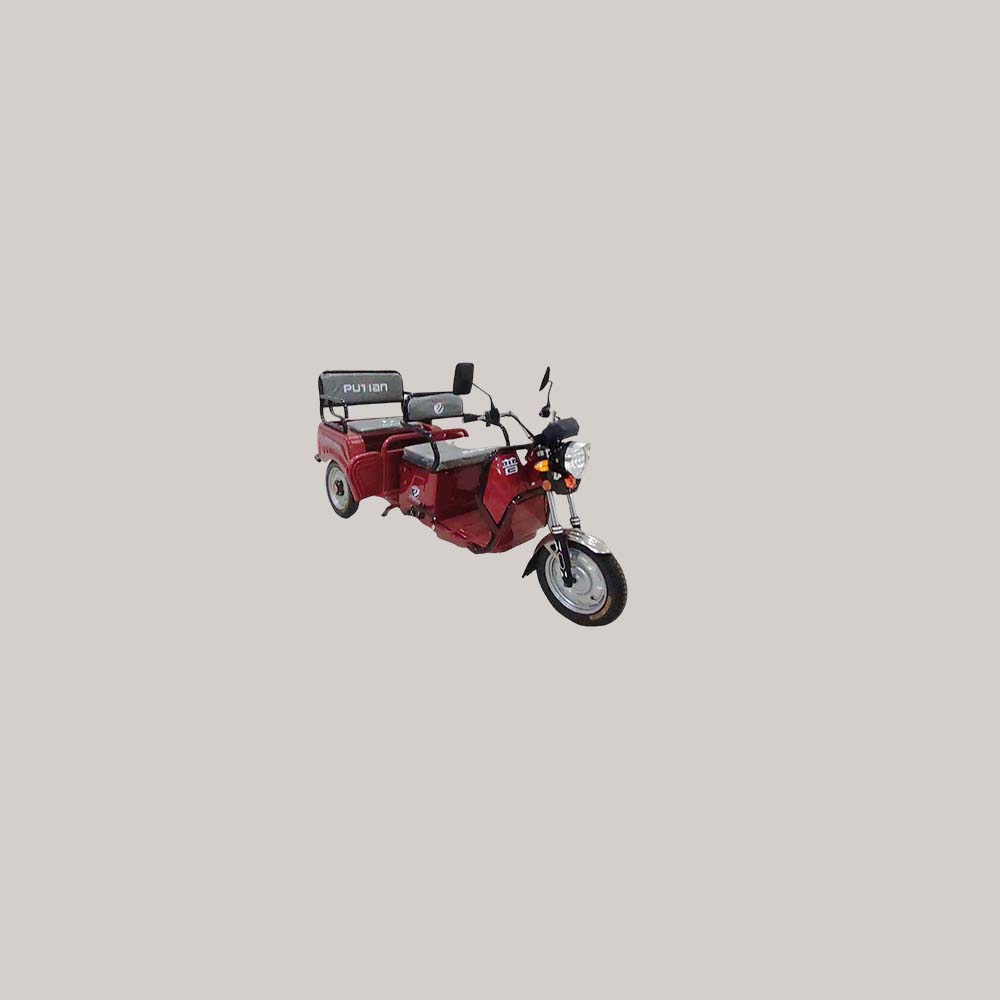
Types of electric tricycle batteries:
Electric tricycles are powered by electricity, which is more environmentally friendly and convenient than fuel-powered motorcycles.
The more common types of batteries are lead-acid batteries and lithium batteries.
At the same time, lithium batteries can be roughly divided into two categories: lithium metal batteries and lithium-ion batteries.

Definition of lead-acid battery & lithium battery:
A lead-acid battery (VRLA) is a battery whose electrodes are mainly made of lead and oxides, and the electrolyte is a sulfuric acid solution.
In the discharge state of the lead-acid battery, the main component of the positive electrode is lead dioxide.
The main element of the negative electrode is lead; in the charged state, the main piece of the positive and negative electrodes is lead sulfate.
The nominal voltage of a single-cell lead-acid battery is 2.0V, which can be discharged to 1.5V and charged to 2.4V; in applications, six single-cell lead-acid batteries are often connected in series to form a nominal 12V lead-acid battery, and 24V, 36V, 48V, 60V, etc.
“Lithium battery” is a type of battery using lithium metal or lithium alloy as the harmful electrode material and using a non-aqueous electrolyte solution.
In 1912, the lithium metal battery was first proposed and studied by Gilbert N. Lewis.
In the 1970s, M. S. Whittingham proposed and began to study lithium-ion batteries.
Due to lithium metal’s very active chemical properties, the processing, storage, and use of lithium metal have very high environmental requirements.
“Lithium Metal and Lithium-Ion Batteries”:
A. Lithium-ion batteries do not contain lithium in a metallic state and are rechargeable.
B. The fifth-generation product of rechargeable batteries, lithium metal batteries, was born in 1996, and its safety, specific capacity, self-discharge rate, and performance-to-price ratio are superior to lithium-ion batteries.
The difference between lead-acid batteries and lithium batteries
lithium battery:
The lithium battery is small in size and large incapacity Lithium batteries are much smaller in volume, only about 1/3 of lead-acid batteries.
That is to say, a lithium battery pack with the same capacity is the size of an egg, for example, and a lead-acid battery pack has three eggs. Large, so the lithium-ion battery used in the machine is small in size, light in weight, and more convenient to run.
At the same time, the weight of lithium batteries is much lighter than that of lead-acid batteries, generally only about 1/6 of that of lead-acid batteries.
Still, the capacity of lithium batteries is much larger than that of lead-acid batteries; that is, the stored power is more.
Long battery life Because the capacity of the lithium battery can store more power, the battery life of the lithium battery is much longer, and the weight of the lithium battery itself is low.
Lithium battery has many times of charge and discharge As long as the battery is charged and discharged, it will be damaged more or less.
Generally, the lithium battery’s complete charge and discharge times are more than 2000 times.
The service life of the lithium battery is about seven times that of the lead-acid battery, so the lithium battery can be used longer. Time, but also easier to maintain.
Lead-acid batteries:
Lead-acid batteries are cheap Compared with lithium batteries, the price of lead-acid batteries is much lower, generally only about 1/3 of lithium batteries, so the cost of using lead-acid batteries is lower when purchasing batteries of the same voltage.
Lead-acid battery has high safety performance Qianfan battery has been developed for nearly a hundred years.
Due to its structure and materials, its stability is excellent.
The lead-acid battery will not spontaneously ignite or explode whether charging or using it. Compared with lithium batteries, lead-acid batteries are much safer.

Lead-acid batteries can be repaired In using the lead-acid battery, if there is a problem, it can generally be repaired correspondingly, while the lithium battery is usually irreparable.
If it is damaged during use, it can only be replaced. In addition, The lead-acid battery can also be used for further recycling when the lead-acid battery cannot be repaired, and the new battery can be replaced at a discount by recycling.
How to choose
We consider how to choose the battery of the electric tricycle from the following three aspects:
Service life The cycle life of lead-acid batteries is about 300 times, and the maximum is 500 times, while the cycle life of lithium batteries can reach more than 2,000 times.
From experience, the service life of lead-acid batteries is at most two years, but the same new lithium-ion batteries are used under the same conditions, and the service life is at least seven years.For the memory effect The memory effect is an effect of crystallization of the battery contents due to use.
Lithium battery packs have no memory effect. For example, after more than 1,600 charges, its storage capacity can still reach 85%.
No matter what state it is in, the lithium battery can be charged and used at any time without having to discharge it before charging.
Most batteries are recharged after the battery runs out to prevent memory effects.
For weight and capacity and environmental protection The volume of the lithium battery is 1/3 of the lead-acid battery, and the weight is 1/3 of the importance of the lead-acid battery. Therefore, when the lithium battery is applied to the machine, the lithium-ion battery is small in size and light in weight, which is more convenient to operate.
In contrast, the lead-acid battery will be significant and heavy, which will bring certain disadvantages to the operation of the machine.

Moreover, lithium batteries do not contain any heavy metals or rare metals and will not cause pollution and pressure on the environment.
The lead-acid battery has a large amount of lead and acid, which will cause decay if improperly recycled after use.
Conclusion
To sum up, most electric vehicles now welcome the addition of lithium batteries. To see more, please subscribe.


